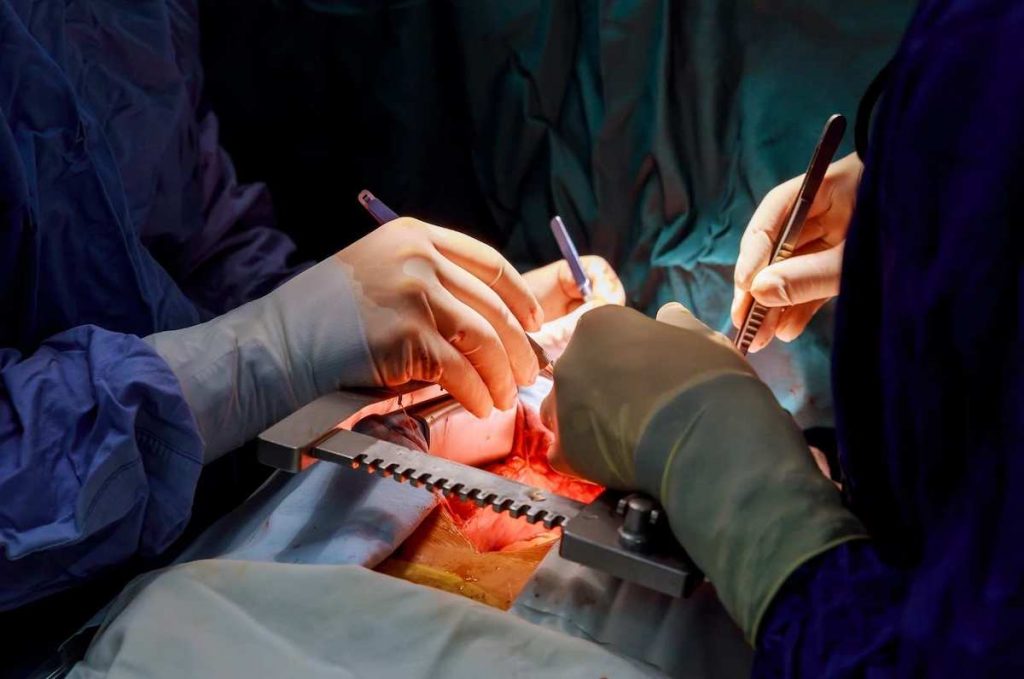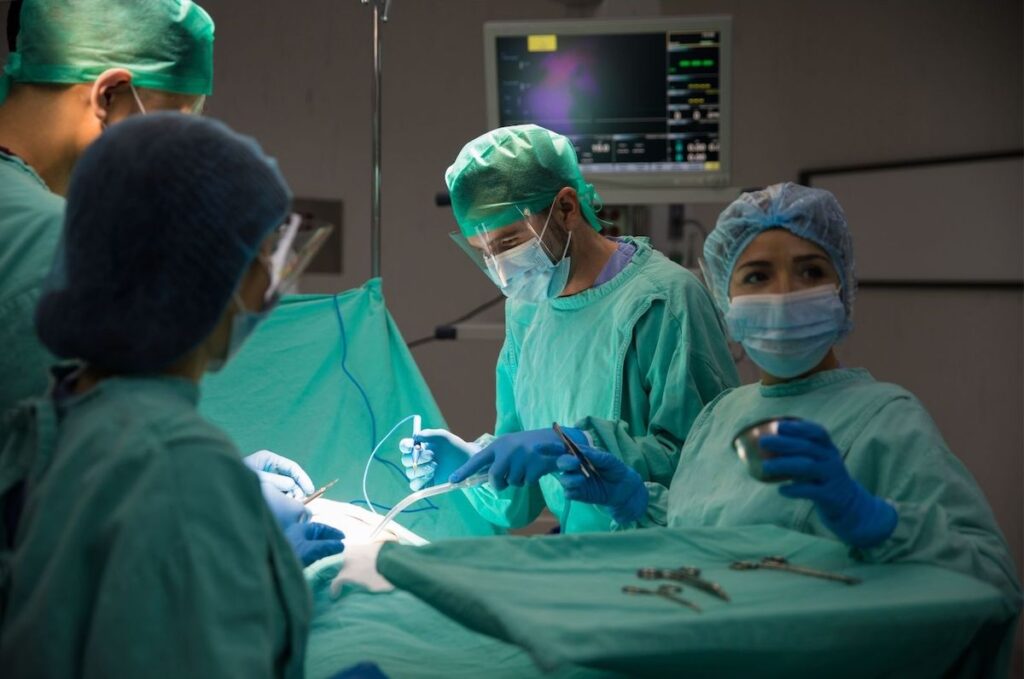LEDs (light-emitting diodes) enable strong light with less electricity. They help reduce our carbon footprint and improve information technologies. Their emergence in the late-20th century has now made its way into powerful and convenient new options for surgical lighting. These include surgical devices.
LEDs don’t only provide more light, they can reduce infection rates, promote healing, and allow for advanced medical instruments.
Overview of LED lighting in surgery
Two major LED developments led to effective surgical light arrays:
- full-spectrum colored diodes
- reliable, inexpensive manufacturing techniques
General Electric developed the first visible light-emitting diode in 1962. This first commercially available LED, which was red, was followed by the first yellow LED 10 years later.
Japan’s Nichia Corporation’s development of the blue diode came in 1979.
Those first LEDs, especially the blue spectrum, were expensive to manufacture until 1994. At that time, advances in manufacturing semiconductor chips by Fairchild Semiconductor dropped the price per LED from US$200 to less than 5 cents.
Fairchild packaged inexpensive multi-colored LEDs into a wide variety of commercial products. From remote controls to video screens, this led to the development of extensive arrays of full-spectrum surgical lighting.
In 1997, a working group of surgical lighting manufacturers worldwide agreed to a set of manufacturing standards, the International Electrotechnical Commission (IEC) Standard 60601-2-41, ensuring the safety of surgical lighting.
LEDs’ low energy use and portability allowed the development of handheld surgical lighting.
Light sources can range from lighted scopes to retractors. This reduces shadowing and increases depth perception.
Brightness
The typical operating theater of the early 1990s used approximately 200,000 lumens, usually through single-source overhead halogen lights.
That lighting level provided enhanced visibility but created issues with UV penetration, heat and infection, and surgeon eye strain. The advent of LED lighting offered solutions to these issues, while also improving surgeon visibility.
Surgical halogen lamps typically suffer from low luminous efficiency – a low ratio of light per watt of electricity. The need for UV filters, which also block some visual light, further cuts their efficiency.

LED arrays provide the same lumens of light while using 70% less electricity than halogen lights.
Overhead lighting systems normally consist of multiple light heads on a track or pivot arm, equipped with spectral characteristics, focus patterns, light reflection, and adjustable intensity.
These LED systems improve visibility and minimize shadows while needing less space.
They provide equivalent lumens – central illumination at the center of the light patch 1 meter from the light source is adjustable from 40,000 to 160,000 lumens – for less than half the operating cost while increasing usability.
Long life and energy efficiency
LED bulbs have a tremendous advantage over incandescent and fluorescent bulbs because of their lifespan.
LED bulbs last up to 5 times longer than fluorescents and 25–42 times longer than equivalent incandescent lighting.
This extended lifespan saves money, both through reduced replacement costs and reduced maintenance costs. Reduced downtime due to bulb replacement also increases patient safety.
LED lights’ efficiency over traditional incandescent lights provides an excellent reason for converting to LED technology.
LED operating theaters use approximately 1/3 of the electricity of one equipped with incandescent or fluorescent bulbs.
That cost reduction represents substantial savings over the bulb’s lifespan. Given the extended lifespan, savings accumulate over decades.
Less heat
LED bulbs’ energy efficiency provides another benefit. Increased efficiency directly translates to less heat production. Excess heat produced during surgery dries exposed tissues and tires surgical staff.
LED bulbs do not produce damaging UV rays, limiting the heat and damage created, increasing patient safety and surgeon comfort. However, some heat is produced, even by LED bulbs. The IEC limits this irradiance to a maximum of 1,000 W/m2 at the light patch.
This level of reduction is only possible with LED bulbs and significantly reduces potential heat-related damage. The risk of heat and burning is higher with fiber-optic lighting.

Color temperature – reduce fatigue, increase accuracy
LED lights offer another unique advantage over incandescent and fluorescent bulbs. LED bulbs, consisting of arrays of red, yellow, and blue diodes, can be specifically designed for the most appropriate visible light spectrum, from cool blue through pure white to warm pink.
Specialty bulbs with multi-colored arrays can be adjusted by the surgeon for each surgery, fine-tuning the light spectrum to provide optimal visibility.
So, a plastic surgeon can adjust the color spectrum to warmer colors to highlight skin coloring and texture, highlighting surface veins. An abdominal surgeon can use a cooler spectrum to see clearly into the abdominal cavity, using the same bulb.
The IEC has set criteria for accurate color reproduction, ensuring that each surgeon will receive exactly the spectrum that most enhances visibility.
Can be used in surgical devices
Before LED lighting’s emergence in the 1980s, surgical light came from overhead. With LED capabilities, a large variety of supplemental lighting became a possibility.
Initially, LEDs’ efficiency and portability led to the development of effective scopes for laparoscopic and endoscopic surgeries.
While these surgeries had been attempted since the early 20th century, the addition of LED lights to scopes, first attempted in 1988, led to a rapid expansion in surgical techniques not previously possible.
The success of handheld scopes led to other portable and handheld LED devices in surgery. Lighted, battery-powered retractors changed surgical lighting. A single overhead source susceptible to shadowing became multisource, high-intensity lighting. This provides spectrum-appropriate light directly into the surgical cavity.
LED retractors can provide tens of thousands of lumens of additional light per device through the use of a lightweight, battery-powered plastic design.
As these retractors are positioned to shine directly into the surgical cavity, they eliminate shadowing and provide superior depth perception. Those made of plastic are also less likely to interfere with imaging.
New uses for LED lighting are being developed. Another property of LED lights is the ability to kill bacteria. This increases patient safety during and after surgery. Urinary catheters equipped with LED lights eliminate bacteria in the ureter, a common source of infections post-surgery.
LED-equipped handwashing stations reduce the potential of bacteria entering the surgical theater. Thus, the same advance in technology, LED lighting, which aids vision, can now increase patient safety.
Failsafe lighting
LED surgical lighting provides one more important advantage.
Unlike incandescent bulbs, which can fail suddenly from issues like broken bulbs or filaments, LED bulbs fail slowly.
As an LED bulb nears the end of its lifespan, it gradually dims. LED bulbs can be replaced during regular maintenance when lighting tests indicate reduced lumens, virtually eliminating a sudden light failure during surgery.
References
- Technical Guidance Document: LED Surgical Task Lighting (energy.gov)
- Lighting: Surgical Task Lighting (sustainabilityroadmap.org)
- Overall Optical Design of LED Surgical Luminaires of Variable Light Spot: Science Publishing Group (opticsjournal.org)
- Basics of surgical lighting (getinge.com)
- LED Light Characteristics for Surgical Shadowless Lamps and Surgical Loupes – PubMed (nih.gov)
- History of LED – Development of Light-Emitting Diodes (historyoflighting.net)
- A brief history of endoscopy, laparoscopy, and laparoscopic surgery – PubMed (nih.gov)
To learn more about the advantages of LED-lit medical devices such as the koplight™ surgical light retractor, contact us at Yasui or download a brochure.

